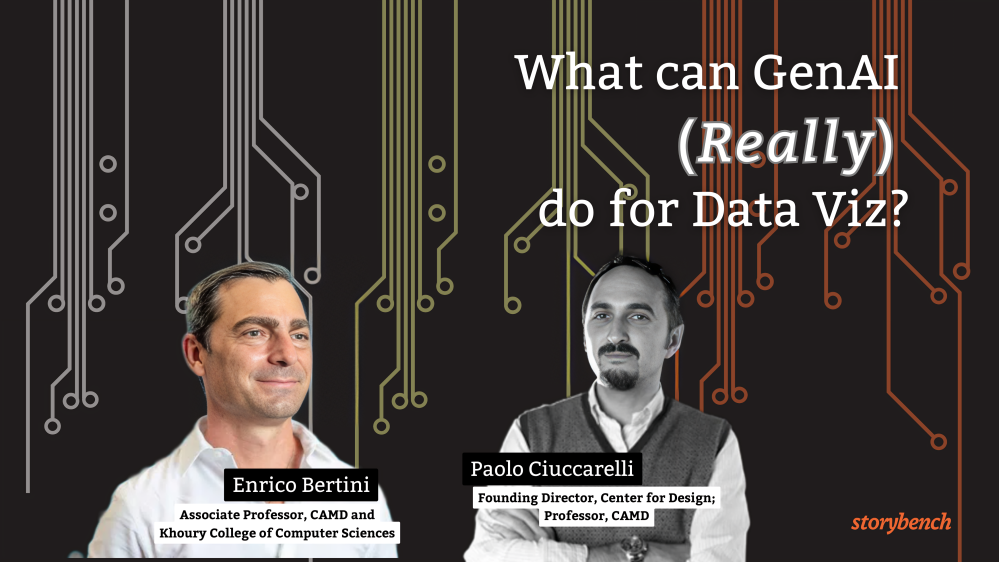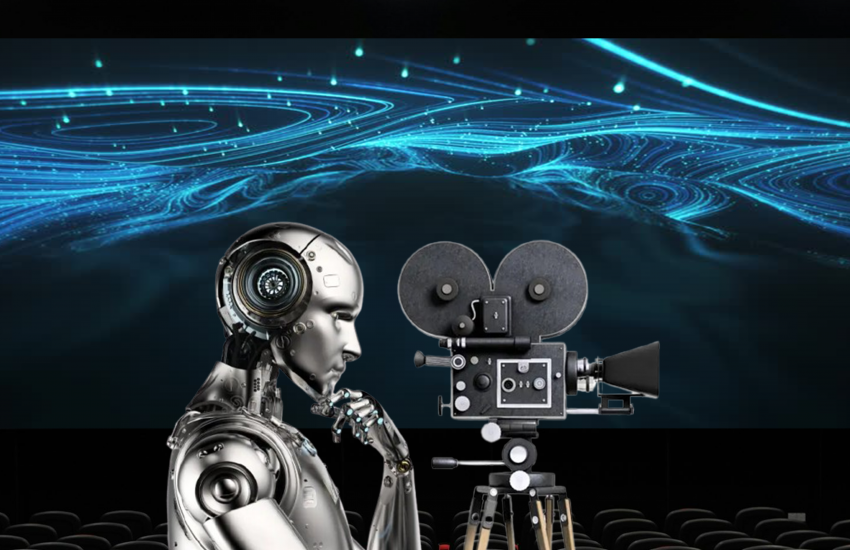What Can GenAI (Really) Do For Data Visualization?
GenAI has emerged as a transformative tool in data visualization, offering the ability to interpret and represent complex datasets with ease—but can it consistently maintain accuracy while doing so?
At “What can GenAI really do for data visualization?,” part of the IDDV360 series at Northeastern University’s Center for Design, experts pointed to the technology’s potential to streamline complex data processes without compromising accuracy
Enhancing accuracy and streamlining analysis
Vidya Setlur, senior director at Tableau, warned that the technology is not foolproof despite AI’s potential to ease the workload.
“Even with automation, ensuring accuracy is paramount, especially when these visualizations inform critical decisions,” Setlur said. She emphasized how Tableau’s team has been working on tools that allow AI to assist with high-friction tasks like data cleaning and integration so users can focus on generating precise and clear visual insights.
Victor Dibia, principal research software engineer at Microsoft Research, highlighted the importance of GenAI in hypothesis generation and data summarization.
“Generating good questions and insights from data can be overwhelming for beginners, but AI tools like LiDAR help bridge that gap,” Dibia said in his demonstration of LiDAR, an AI tool developed at Microsoft. LiDAR uses a four-stage pipeline to analyze data, from initial summarization to visualization recommendations, helping users quickly find relevant patterns while maintaining accuracy.
Striking a balance between reliability and speed
Other panelists included Pau Garcia, founder of Domestic Data Streamers. Setlur, Dibia, and Garcia raised the issue of balancing AI’s speed with the reliability needed in professional-grade data visualizations.
Dibia said Microsoft uses “constraint generation” to mitigate errors, employing predefined templates and rule sets to guide AI in producing visualizations that adhere to user intent and accuracy. According to Dibia, this constraint-based approach prevents AI from generating misleading or irrelevant visuals.
“GenAI can produce visuals rapidly, but ensuring those visuals are reliable and contextually accurate is essential,” Dibia said. He cited Microsoft’s use of code templates and real-time user feedback to keep AI-generated visuals on track. These precautions, he added, make it possible for AI to work collaboratively with users, enhancing their productivity without sacrificing accuracy.
AI’s Role in Conciseness and Accessibility
“The key benefit of AI tools is their ability to provide clean, concise visuals while reducing the cognitive load on the user,” Garcia said, discussing how GenAI could help data visualization become more accessible by shifting away from complex, manual design tasks. His work at Domestic Data Streamers uses AI tools to create more accessible visual experiences for novice users, who may lack technical expertise but still need to interpret and act on data insights.
The panel also addressed accessibility in data visualization, particularly for users who may not have extensive data skills. “For many, data visualization can feel out of reach,” Setlur said, “but GenAI’s ability to simplify complex data into clear visuals makes it accessible for all.”
Accuracy as a Benchmark for AI’s Success
Despite the potential for advances, accuracy is still a question — and remains the foundation for responsible and effective visualization for both professionals and casual users.
“The technology is advancing rapidly, but without accurate, verifiable insights, it risks undermining the very purpose of data visualization,” Setlur said. “In the end, AI’s value will be measured not by how much data it can handle, but by how precisely and truthfully it presents that data to us.”
- Early Fall 2025: Journalism faces new AI crossroads - October 9, 2025
- What Can GenAI (Really) Do For Data Visualization? - September 11, 2025





